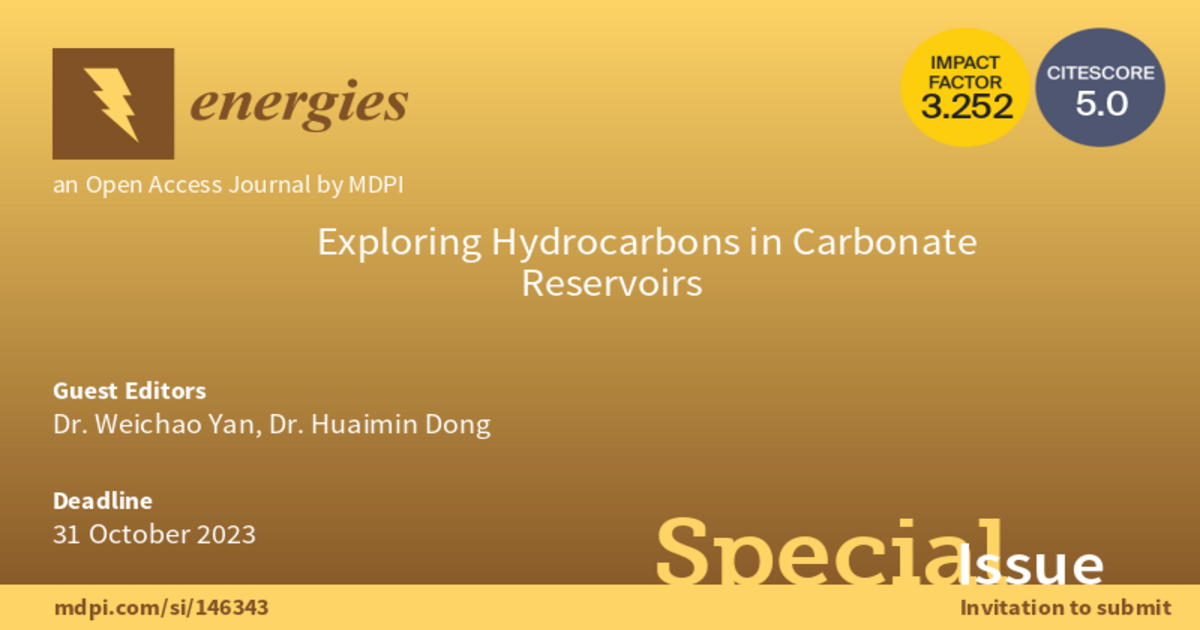Exploring Hydrocarbons in Carbonate Reservoirs
A special issue of Energies (ISSN 1996-1073). This special issue belongs to the section "H1: Petroleum Engineering".
Deadline for manuscript submissions: closed (31 October 2023) | Viewed by 4962

Special Issue Editors
Interests: logging method and interpretation; petrophysics; digital core technology; multi-scale, multi-phase and multi-field coupling super-geocomputing theory; software and application
Special Issue Information
Dear Colleagues,
Carbonate reservoirs are one of the obstacles in exploration and development due to their complex geological conditions, strong heterogeneity, and diverse types. In recent years, with the development of geological theories, rock physical technologies, well-logging evaluation methods, forward modelling, fracture prediction, and fluid detection, many new advances have been made in carbonate reservoir exploration technologies, evaluation methods, and field applications.
This Special Issue will compile research results on petrophysics, numerical simulation, well-logging evaluation, reservoir prediction, and other oil and gas exploration methods and technologies of carbonates, as well as practical application studies. Topics of interest for publication include, but are not limited to:
- Theory, experiments, and application of rock physics.
- Construction method and numerical simulation of carbonate digital rock models.
- Logging identification and parameter evaluation of carbonate reservoirs.
- Prediction of fluid distribution and geophysical response in carbonate reservoirs.
- Application of hydrogeology in carbonate geomorphology and key zones.
Dr. Weichao Yan
Dr. Huaimin Dong
Guest Editors
Manuscript Submission Information
Manuscripts should be submitted online at www.mdpi.com by registering and logging in to this website. Once you are registered, click here to go to the submission form. Manuscripts can be submitted until the deadline. All submissions that pass pre-check are peer-reviewed. Accepted papers will be published continuously in the journal (as soon as accepted) and will be listed together on the special issue website. Research articles, review articles as well as short communications are invited. For planned papers, a title and short abstract (about 100 words) can be sent to the Editorial Office for announcement on this website.
Submitted manuscripts should not have been published previously, nor be under consideration for publication elsewhere (except conference proceedings papers). All manuscripts are thoroughly refereed through a single-blind peer-review process. A guide for authors and other relevant information for submission of manuscripts is available on the Instructions for Authors page. Energies is an international peer-reviewed open access semimonthly journal published by MDPI.
Please visit the Instructions for Authors page before submitting a manuscript. The Article Processing Charge (APC) for publication in this open access journal is 2600 CHF (Swiss Francs). Submitted papers should be well formatted and use good English. Authors may use MDPI's English editing service prior to publication or during author revisions.
Keywords
- carbonates
- petrophysics
- digital rock
- well logging
- seismic exploration





